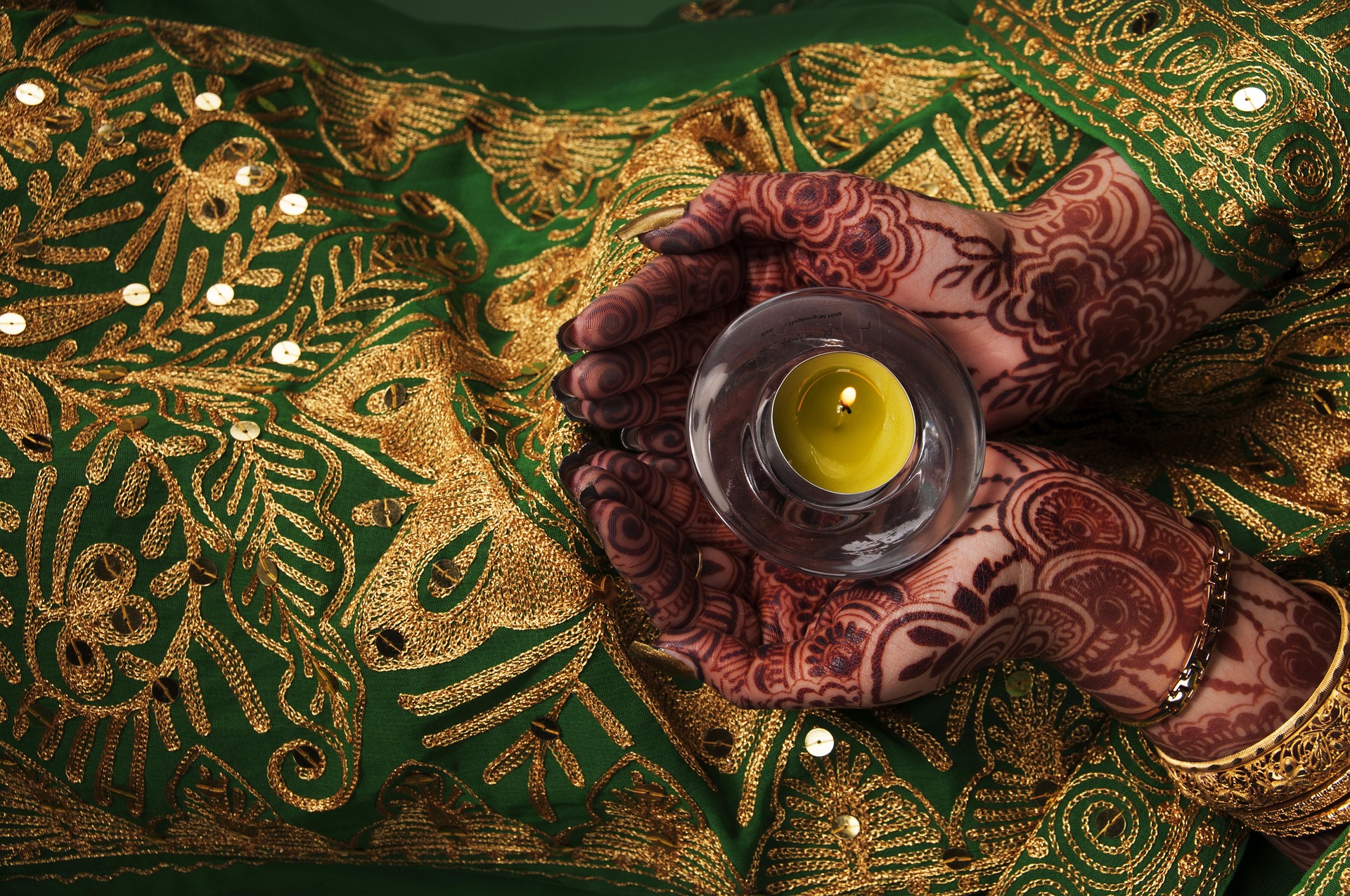My parents were born and raised in India. So, we get to celebrate festivals like Diwali (festival of lights), Holi (festival of colors), Raksha Bandhan (a celebration of siblings) and many more. At events such as weddings and Diwali, many women and some men put on mehndi (also known as henna). The event or custom of mehndi is an important and popular part of Southeast Asian weddings.
Mehndi is a form of temporary body art, and it can be thought of as getting a temporary tattoo. I usually apply mehndi through the pipette-like cone. Pressing on the cone pushes the mehndi paste out of the hole. This is used to make intricate and beautiful designs on a region of a person’s skin. For example, my mom recently applied mehndi on my palms and the back of my left hand. After the mehndi was applied, I waited about an hour before removing it.
Throughout that hour, the paste hardened but even after it hardened, I had to keep my hands straight. Then I removed it by using oil (water isn’t allowed to be used when removing it). One can also put lemon and sugar while removing the mehndi to darken the color. The immediate result of removing the mehndi is a pale red color that is laid out in the same exact way that the paste had been. After a day, the pale red color darkened into a dark red, almost brownish black color.
The leaves of the mehndi plant have a compound called lawsone. When the mehndi paste is applied to someone’s skin, lawsone is released. It binds to proteins called keratin (proteins that are present in your hair, skin, and nails). As the lawsone oxidizes, it darkens the skin. Skin cells shed naturally and as it does so, the mehndi fades.
A mehndi design lasts from one to three weeks, depending on the thickness, oiliness and warmness of skin (more thick, less oily and warmer skin generally helps mehndi last longer). The location of the mehndi also matters. For example, if it was done on the neck or stomach, it’ll show up much lighter. Typically, mehndi is done on the palms, back of hands, soles of feet and on the top of feet.
Mehndi also blocks out light from the sun, so the region in which it was applied will not get sunburnt or tanned. Once the mehndi fades away, it is possible for the hands to have an inverted design (the region in which the mehndi had been is going to be lighter than the rest of the skin).
You may have heard mehndi being called henna. Henna is the name of a medicinal plant that has many uses, while mehndi are the leaves of the henna plant ground into powder/paste and then used as dyes (many people use it as a hair dye because it darkens the hair, conditions it and strengthens it) or temporary tattoos.
Additionally, henna comes from an Arabic word, while mehndi comes from a Sanskrit word. My family members and I speak Hindi at home and this whole language comes from Sanskrit, a language that Ancient Indians spoke and still speak today. My family and I do not speak Arabic, which is likely why we call it mehndi instead of henna.
Mehndi is very safe. It has benefits such as a cooling effect on the hands that might be of relief to many people. And people are very rarely allergic to it because it has been used for more than 5,000 years. I highly suggest getting a mehndi design done if you haven’t already.
VAAGEESHA DAS is a senior at Morgantown High School.
Information comes from:
- Arichandran, L. (2018, April 28). How does Mehendi impart colour to the skin? What’s the mechanism behind it? Quora. Retrieved September 14, 2021, from https://www.quora.com/How-does-Mehendi-impart-colour-to-the-skin-Whats-the-mechanism-behind-it;
- Ask any difference. Ask Any Difference. (2021, August 15). Retrieved September 14, 2021, from https://askanydifference.com/difference-between-mehndi-and-henna/;
- What is Henna? Sarahenna. (n.d.). Retrieved September 14, 2021, from https://sarahenna.com/abouthenna.




